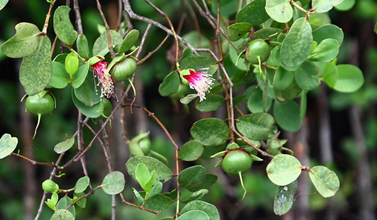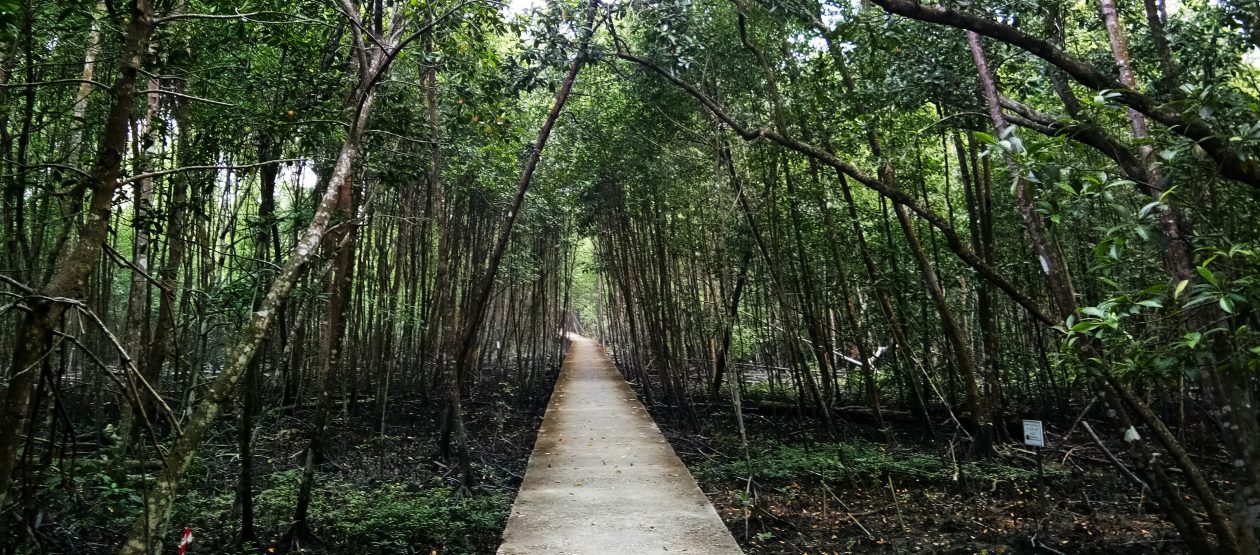CLICK BELOW FOR AUDIO GUIDE
Sonneratia alba, commonly known as mangrove apple, is a species of plant in the family Lythraceae. The fruit is noted for its outward similarity to the persimmon fruit. This tree is a type of mangrove growing up to 20 m in height and with a trunk reaching a maximum diameter of 50 cm. It is present in tropical tidal mudflats from Africa to Indonesia, southwards down to Northeast Australia and New Caledonia and northwards up to Hainan Island in China and the Philippines.
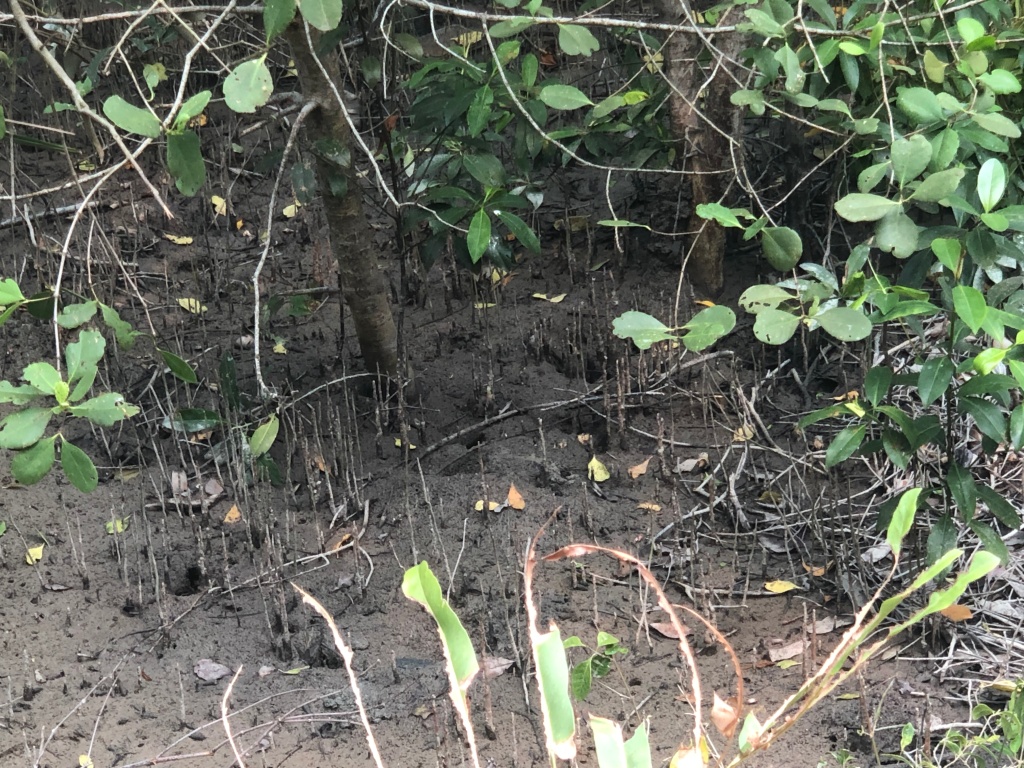
The barks are cream to light grey in colour, finely fissured. Thick underground cable roots spread out from the trunk. These bear sturdy conical pneumatophores (25cm to 1m tall). But the tree may lack pneumatophores if it grows on a solid substrate.
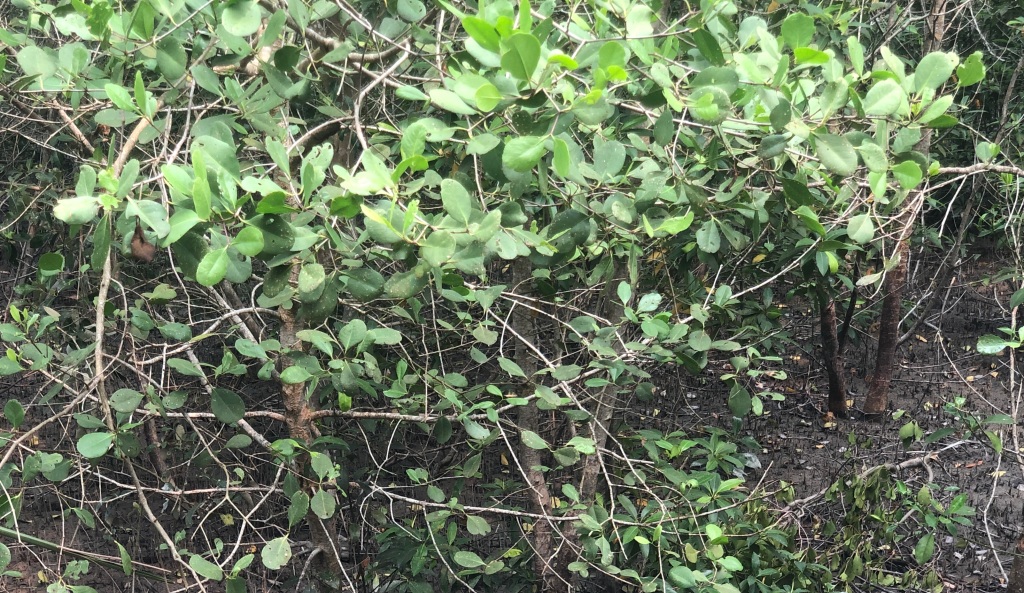
Leaves nearly circular or spoon-shaped (5-12.5cm) tapering at the base, thick and leathery. Young leaves are pale green with a faint tinge of pink at the leaf ‘tip’. Flowers large (10cm diameter) with 6 petals narrow white often inconspicuous, and many long white stamens that are pink at the base, forming a powder-puff shape. Stiff cup-shaped calyx with sepals broadly triangular and reddish on the inside.
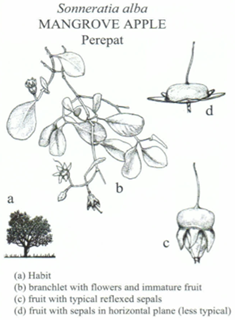
The wood of Sonneratia alba can be used as firewood, but not when other trees are available. The fruits are eaten when “quite ripe” by the Malays and in Java and used to flavour fish in the Moluccas. The leaves are also eaten raw and cooked. The fruits are sour but edible. The fruits are used in a compress to check haemorrhaging. The ripe fruit is said to taste like cheese. The timber is used for boats and houses in Indonesia, as well as bridge and wharf construction. Also for interior work including furniture, musical instruments but requires bronze nails. The Papuans make corks and float out of the buoyant pneumatophores. The plant is used in traditional medicine to treat cuts and bruises. The fruit is used to treat intestinal parasites and coughs.
